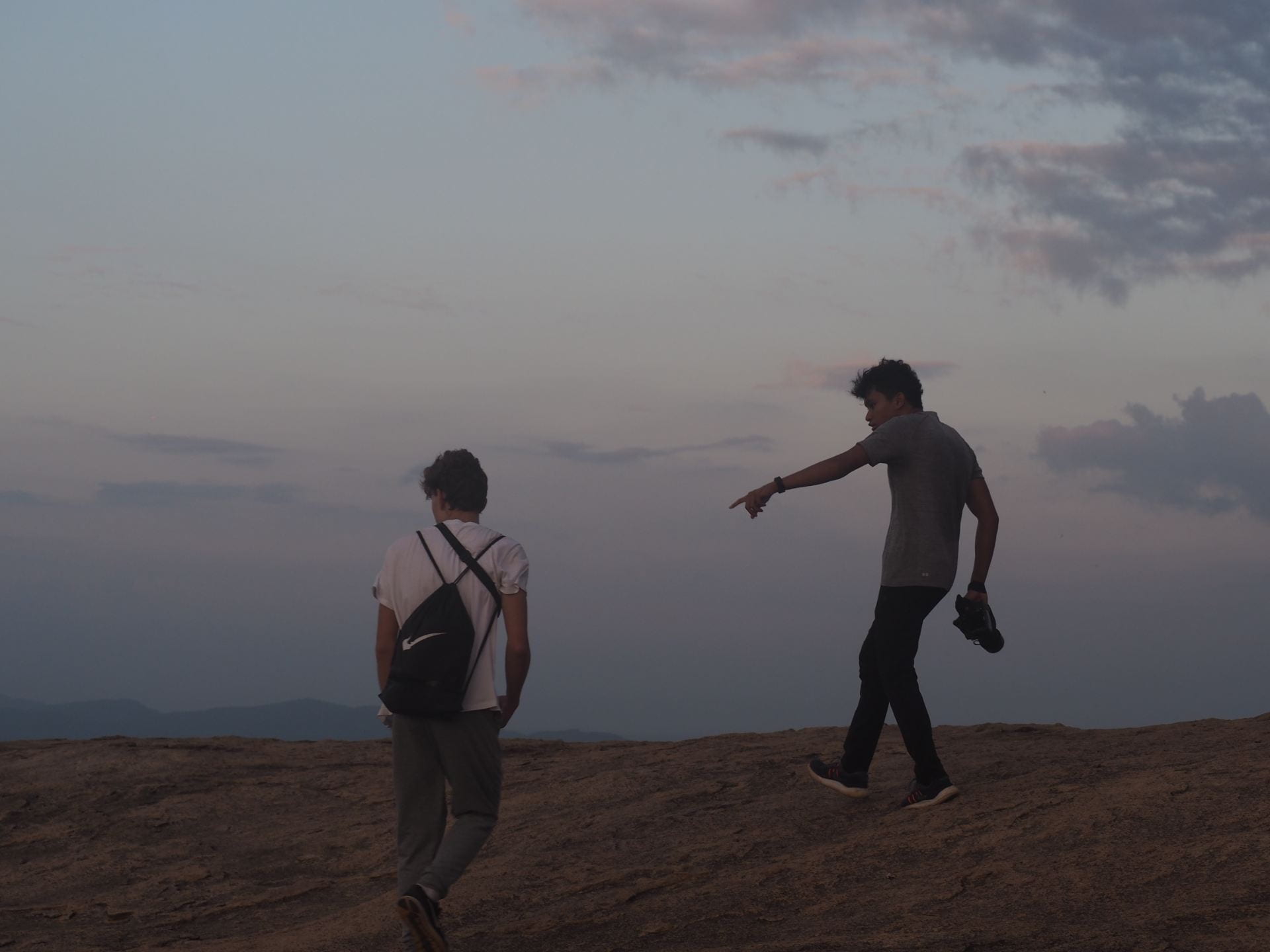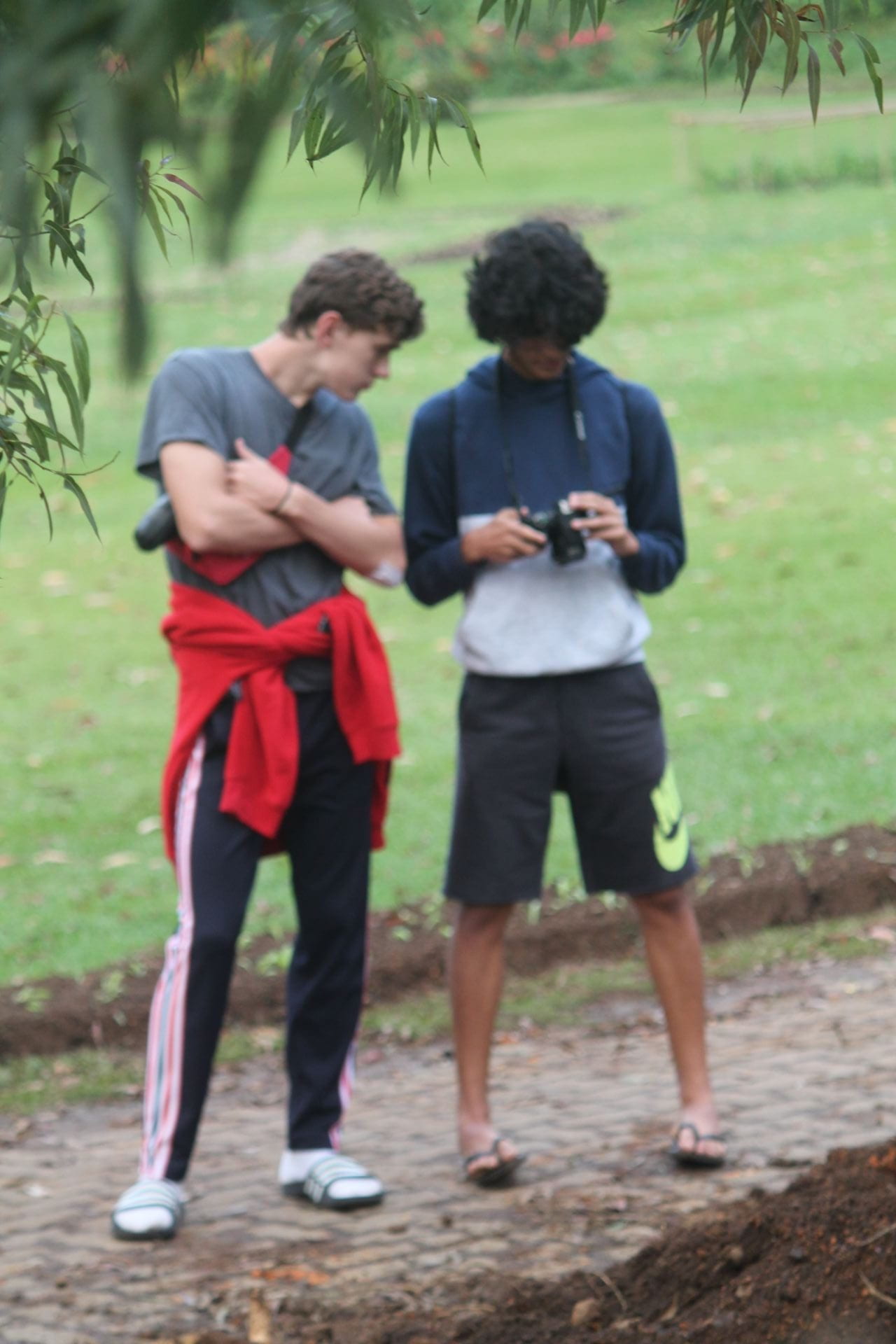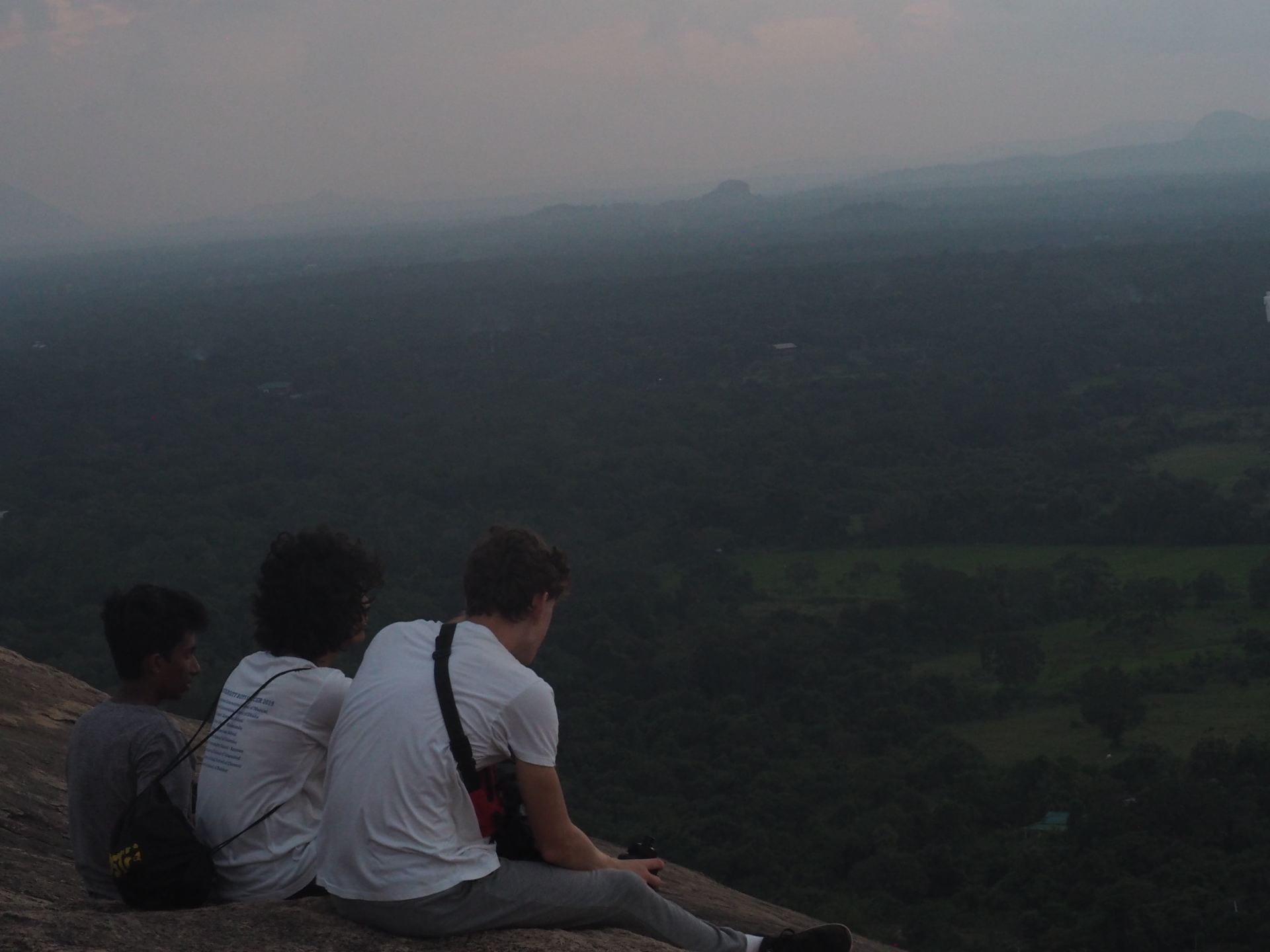Introduction

(Photo Credits: Calvin Ng)
OSC’s Highlands Week Without Walls program is a hiking-oriented learning experience designed to expose students to the unique natural wealth of the Sri Lankan Highlands. This year’s journey was slightly different from the previous year’s in terms of the proposed route (we took a northern circular loop into the hills, spending time in Yapahuwa, Pidurangala, the Knuckles range, and Nuwara Eliya). This unique learning opportunity is linked to IB’s interdisciplinary unit concept and serves as a combination of science, art, and CAS as students explore photo documentation, the ecology of montane ecosystems, and hiking, with the outcome of the journey being a photographic journal produced by the students.
The Journey

(Photo Credits: Alexandra Parr)
Day 1
The first day of the 2020 Highlands Week Without Walls trip began with a lengthy bus ride from the gates of OSC to the rock fortress of Yapahuwa followed by a hike to its summit and the subsequent enjoyment of the incredible views which it provided. While the majestic citadel allowed us to soak in the scenery, it also gave us a chance to work on our photography skills and to experience an amazing part of Sri Lanka’s history. After returning to ground level we began the journey to Back of Beyond and, after a brief lunch, headed to Pidurangala. From its peak, we once again enjoyed stunning views, this time of Sigiriya and the surrounding area. After watching the sunset we returned to camp, participated in a hunt for the rare Slender Gray Loris, and turned in for the night.

(Photo Credits: Matthew Douglas)
Day 2
After our late night, we got off to a relatively sluggish start (with breakfast at 7:30), and embarked on our first frog-watch of the day. While we were unlucky in terms of frogs, we did manage to photograph various other forms of wildlife including jungle fowls (Sri Lanka’s national bird) and small kangaroo lizards. Upon the conclusion of this jaunt, we immediately piled into our vans and traveled to a wildlife park in order to complete our second frog-watch, making several stops along the way. Once in the park, we began the hunt for the much-vaunted and extremely rare point-endemic frog species named “Nannophrys Marmorata” We were extremely lucky and were able to find several including both juveniles and adults, getting high-quality photographs of both. Shortly after we once again experienced amazing views, this time from the cliffs of Pitawala Pantana and finished the day’s journey at Sir John’s Bungalow – the montane escape of Sri Lanka’s third prime minister. Sir John’s is an establishment run by Nadeera Weerasinghe, a pioneering naturalist and expert on Sri Lankan wildlife, and as a result, we were treated to our third frog-watch which was followed by dinner and bed.
Day 3
The third day began with a hearty Sri Lankan breakfast of rice and curry followed by a photography session regarding a knuckles bent-toe gecko. Immediately following this we set off on our daily hike, which we had originally planned to be a nine-kilometer route to either the Patana Ella waterfall or along the Mahigala trail. Unfortunately, however, shortly after we set off along our planned route the skies opened up and we were immediately soaked. To make matter worse, we lost several of our group members in the torrent of rain and were forced to stop and end off search parties that were primarily coordinated by our local guide. After over an hour of waiting and searching, we were finally rejoined and elected to cut short our journey and return to the vans. Upon our arrival at camp, a mad dash to the showers commenced and we began the lengthy process of drying off and reflecting on our journey The day concluded with a hunt for more “Nannophrys Marmorata” and venomous green pit vipers, dinner, and finally, sleep.
Day 4

(Photo Credits: Talia Shea)
Day four of the 2020 Highlands trip began with a marathon bus ride from the upper knuckles to Sri Lanka’s beautiful tea country of Nuwara Eliya. After the six-hour journey, we arrived at the Jetwing St. Andrew’s hotel and retired to our rooms for a brief while before reconvening in the common area and preparing to depart on the day’s explorative adventure. We once again stepped onto the busses, this time for a short ride to Victoria Park, one of Nuwara Eliya’s premier tourist attractions. The park was a beautiful agglomeration of diverse and exotic flora and fauna (and thus provided us with an ideal opportunity to practice our photography skills). After spending a few hours in the park we returned to the hotel for just a moment and immediately embarked on the final frog watch of our journey, where we found a variety of incredible specimens and photographed each of them extensively.
Day 5
The final day of the incredible journey began with an early expedition to Sri Lanka’s highest point at Pidurutalagala. Unfortunately, after last year’s Easter Sunday bombings, security around the mountain’s radar installation had tightened immensely, and we were forced to wait a few kilometers below the peak while we were issued the required clearance. This took several hours, but once again the time allowed us to practice photography. In this instance, we focused primarily on portrait shooting, and after a while of this, we were finally able to drive to the peak and experience Sri Lanka’s highest point. Upon our return to Jetwin St. Andrews, we had a delicious breakfast and began the long journey back to Colombo, where we arrived at OSC at approximately 4:40.
Reflection
General Reflection
The 2020 Highlands WWW journey was an incredible opportunity for me to learn more about the montane ecosystems of my island home as well as a way for me to develop my photography skills. I gained an immense amount of knowledge regarding Sri Lanka’s flora and fauna and was able to experience some of the most incredible views the world has to offer. Moreover, through my experiences on WWW, I was able to build more effective communication skills and to explore one of the most vital facets of the International Baccalaureate – the concept of interdisciplinary units. Ultimately, the Highlands journey was an amazing experience and allowed me to grow as a person and as a participant in the IB Diploma Programme.
Learning OUtcomes
- Identify own strengths and develop areas for growth
- Throughout the journey, I was given multiple chances to identify both my strengths and my areas for growth. Moreover, I was given a chance to develop my weaker skills (namely photography) and to further develop my existing strengths (such as hiking and working collaboratively).
- Demonstrate that challenges have been undertaken, developing new skills in the process
- As I mentioned previously, going into the trip I had very little experience with photography, and thus embarking on a journey where it would be the focal point was a daunting task to say the least. Despite this, I decided to undertake the challenge, and my choice resulted in the development of my photography skills and, moreover, my discovery of photography as one of my many passions.
- Demonstrate the skills and recognize the benefits of working collaboratively
- Another major element within the Highlands journey was collaboration. All members of the group were constantly showing support to one another in a variety of ways, including sharing photography tips, providing assistance during difficult stretches of hiking, and providing moral support with encouraging words. All of these instances in which members of the group helped each other certainly allowed me to recognize the benefits of collaboration and, moreover, allowed me to demonstrate my own collaborative skills.
- Demonstrate engagement with issues of global significance
- Finally, the trip allowed me to engage with an issue of global significance, specifically the preservation of endangered or point-endemic species. I was able to engage with this particular issue through my experiences with Nannophrys Marmorata, the point-endemic frog which we saw on multiple occasions in the journey. Seeing this rare species prompted me to reflect on how endangered or endemic species face threats from human populations as well as what can be done to mitigate the aforementioned threats. Ultimately, my experiences on week without walls allowed me to engage with this issue of global significance in a meaningful manner.
